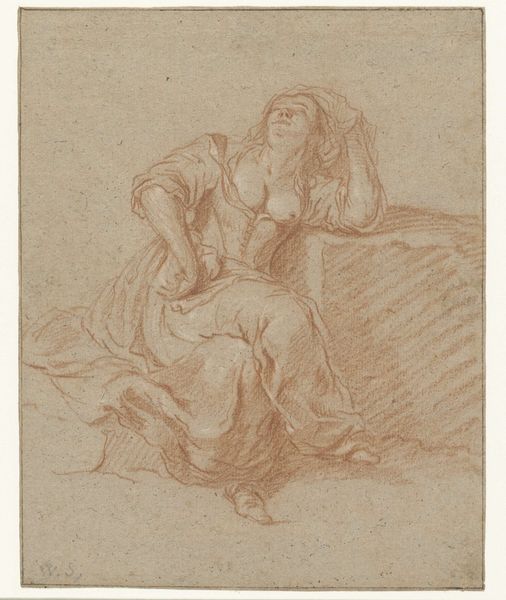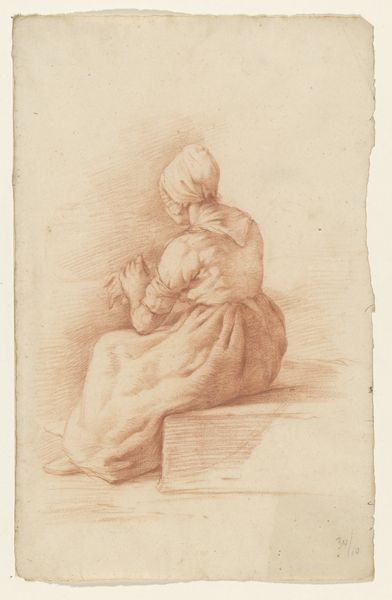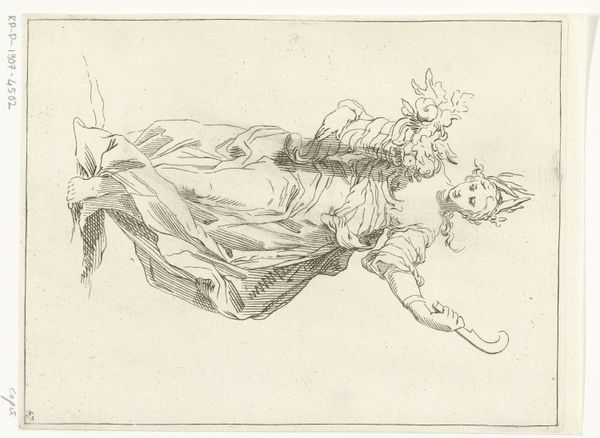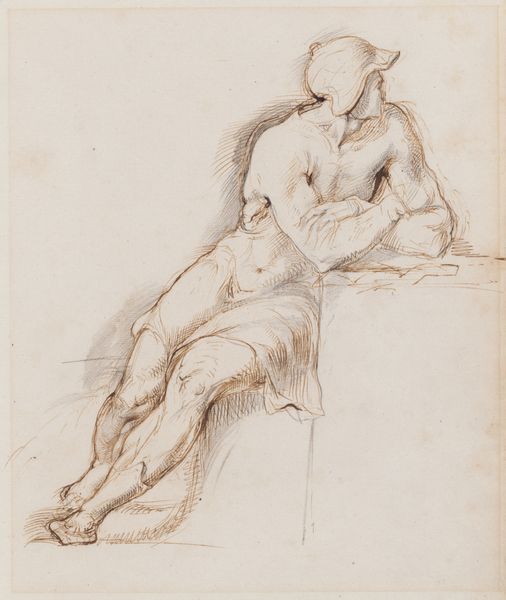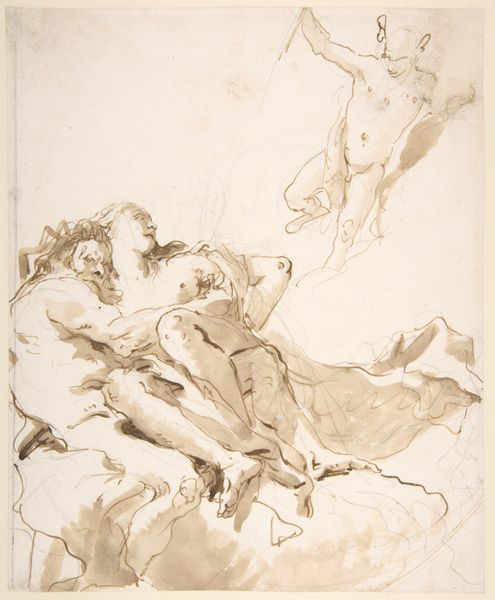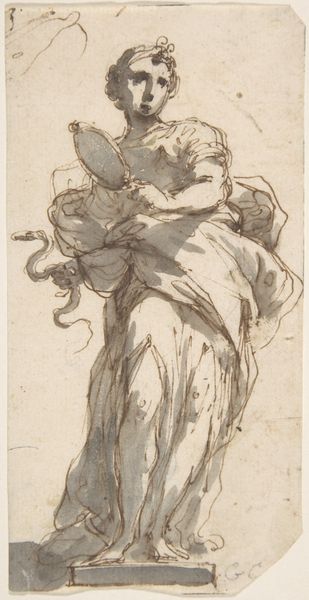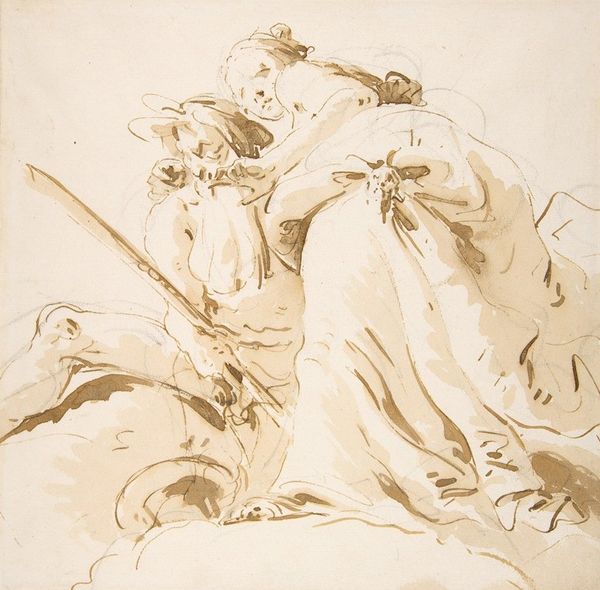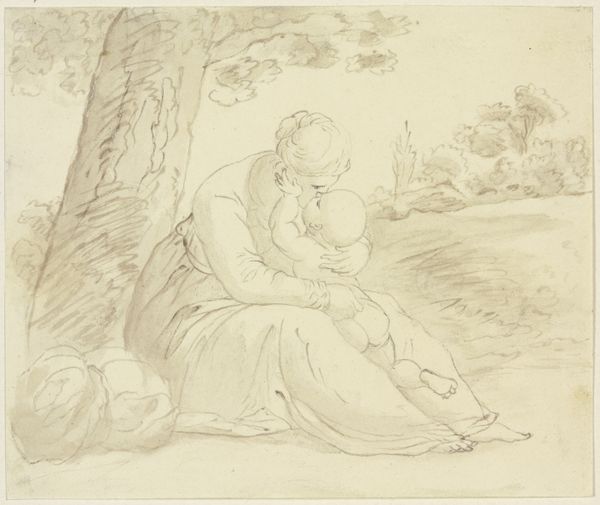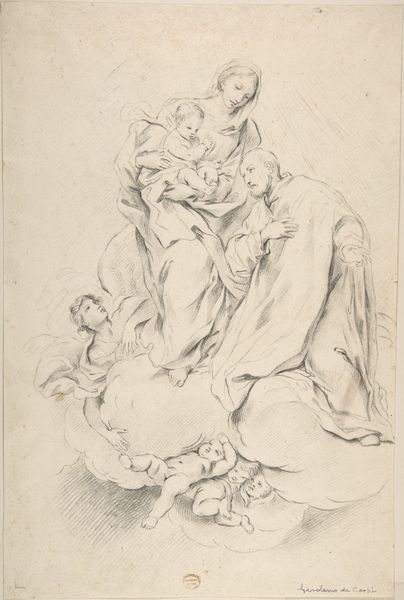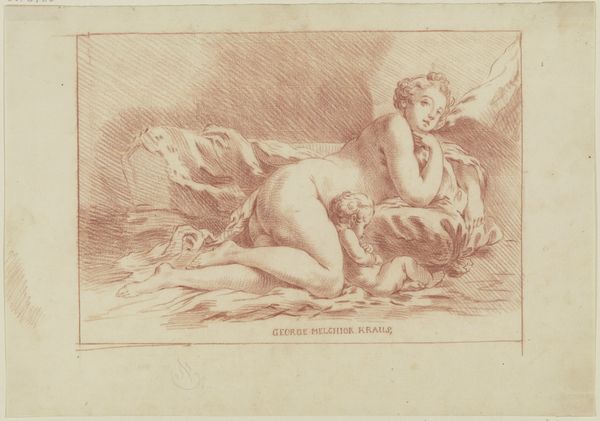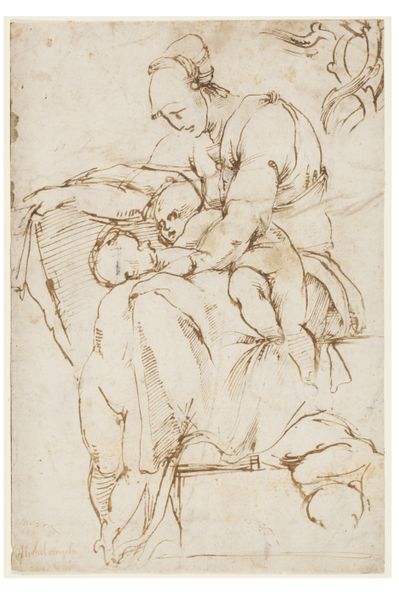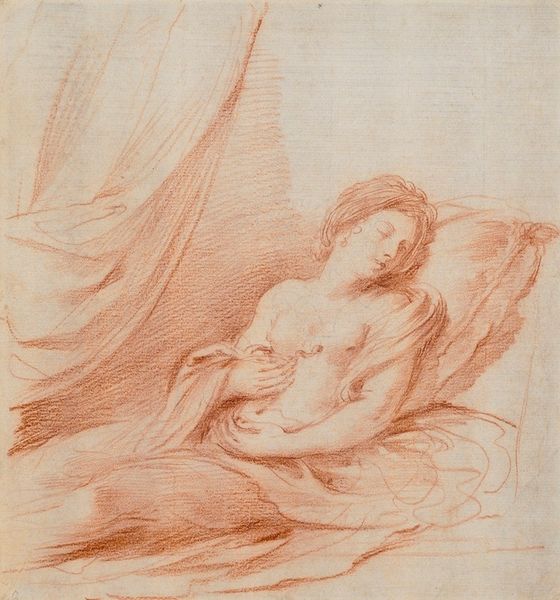
Zittende vrouw met haar hand boven haar ogen gehouden 1646 - 1672
0:00
0:00
adriaenvandevelde
Rijksmuseum
drawing, pencil
#
portrait
#
pencil drawn
#
drawing
#
baroque
#
pencil sketch
#
charcoal drawing
#
pencil drawing
#
pencil
#
portrait drawing
#
genre-painting
Dimensions: height 190 mm, width 152 mm
Copyright: Rijks Museum: Open Domain
Editor: This is Adriaen van de Velde's "Zittende vrouw met haar hand boven haar ogen gehouden," made sometime between 1646 and 1672. It's a delicate pencil drawing housed here at the Rijksmuseum. The posture and the almost monochromatic palette give it a wistful, contemplative feel. What do you make of its formal elements? Curator: The composition draws us immediately to the sitter’s face, framed by her hand and the soft sweep of the drapery. Note how the artist uses line weight to create depth; the lines around her face are more defined, sharply delineating the planes of her expression, whereas the rest of the body and background recede, as suggested by less forceful marks. This hierarchy focuses our attention, doesn't it? Editor: Yes, definitely. The details are so minimal but still convey form so elegantly, especially the way the fabric folds. I also wonder about the significance of the unseen source of light – her hand creates a stark division of light and shadow. Curator: Exactly. That interplay is central. Van de Velde is manipulating light not for simple realism, but as an organizing principle. The directionality creates this interesting visual dynamic— almost a stage-like setting within the image. He is directing the observer's experience by creating focal points. Editor: So it's less about mimicking reality and more about shaping our viewing experience. I noticed a suggestion of a second figure sketched behind, an interesting asymmetry. How does that secondary figure relate? Curator: Precisely. It's intriguing how he positions the faint rendering of what might be another woman partially behind her, but lacks sharp articulation. Perhaps it could echo internal conflicts of temporality. The work invites us to dwell on form itself, seeing how line and shading operate. Editor: That's really interesting to consider, how the relationship of these women's visual presence may be symbolic or thematic in some way. Thanks. I’ll never look at a pencil sketch the same way again! Curator: Indeed, a rigorous reading, attentive to internal relationships reveals much.
Comments
No comments
Be the first to comment and join the conversation on the ultimate creative platform.
